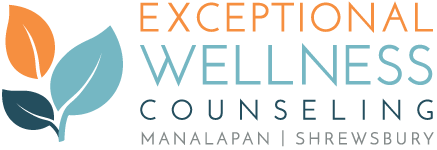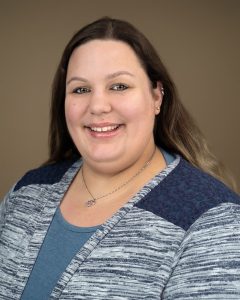| Written by Jessica Lelinho, MA, LPC, LCADC
Imagine back to your childhood, or put yourself in your child’s shoes… it’s your favorite part of the day — recess time! We’re out at school on the playground playing with our friends. Out of nowhere this bigger, taller, stronger individual comes up to you and starts pushing you around. Then they begin the name calling – calling you stupid or dumb. They then make fun of the clothes you’re wearing. As they continue to get louder, there’s now a group of other individuals standing around looking to see what’s going on. All of a sudden, they begin laughing and pointing at you. The others standing around join in and begin to call you names, make fun of the clothes you’re wearing, laughing, and pointing at you. Your face is turning bright red, you’re humiliated and don’t know what to do so you run away crying wishing you were left alone and able to enjoy the playground and your favorite part of the school day.

I think it’s safe to say that in some way or another we’ve all experienced bullying. Not everyone is comfortable or has the self-confidence to stand up to their bully and put their foot down. When the bullying gets repeated over and over again or we’re afraid to stand up for ourselves, something needs to be done.
What is Bullying?
Bullying is defined as any unwanted aggressive behavior among school-aged children that involves a real or perceived power imbalance. This behavior is repeated, or has the potential to be repeated, over time.
In order for the behavior to be considered bullying, the behavior must be aggressive and include an imbalance of power and repetition. An imbalance of power is when bullies use their power to control or harm individuals; the power imbalance has the potential to change over time and in various situations even if the same individuals are involved. Repetition as it relates to bullying, is when the bullying behaviors happen more than once or have the potential to be repeated over time.
Different Types of Bullying:
Sherri Gordon discusses the six different types of bullying: physical bullying, verbal bullying, relational aggression, cyberbullying, sexual bullying, and prejudicial bullying.
-
Physical Bullying:
This type of bullying is the easiest to identify and is the most obvious form of bullying. This occurs when bullies use physical actions (i.e., kicking, hitting, punching, slapping, shoving, and other physical attacks) to gain power and control over those that are being bullied. A physical bully tends to be bigger, stronger, and more aggressive than the individual being bullied.
-
Verbal Bullying:
This type of bullying can be difficult to identify in comparison to physical bullying. If the bullying is occurring in school, the bully tends to act when there is no adult around which can lead to a he-said-she-said situation. In this type of bullying, the bully uses words, statements, and name-calling to gain power and control over those that are being bullied. It is typical for a verbal bully to use relentless insults to belittle, demean, and hurt the individual being bullied.
-
Relational Aggression:
This type of bullying is also known as emotional bullying or social bullying. It is sneaky and tends to go unnoticed. Relational aggression bullying is often seen in middle school, however, it is not limited to just teenagers; you might see relational aggression bullying in the workplace. Typically, females tend to use this bullying method more often than males, especially in fifth through eighth grade in which the individual being bullied is often teased, insulted, ignored, excluded, or intimidated. In this type of bullying, the bully uses social manipulation to bully. The bully is trying to hurt those individuals being bullied or sabotage social standings. The individual is often ostracized from a group, rumors are spread, situations are manipulated, and confidence is broken for the bully to increase their own social standing.
-
Cyberbullying:
This type of bullying is becoming more common especially among teenagers and is more widespread as the bully can act with less risk of being caught. In this type of bullying, the bully often does not have the courage to engage in the bullying behavior face-to-face so they utilize technology to be anonymous. Typically, a teen or tween will utilize the internet or technology to harass, threaten, embarrass, and target the individual. If an adult is involved in this type of bullying it is known as cyber-harassment or cyberstalking. Examples of cyberbullying include: posting hurtful images or comments, making online threats, and sending hurtful emails or texts.
-
Sexual Bullying:
This type of bullying consists of repeated, harmful, and humiliating actions that are targeting an individual sexually. Examples of sexual bullying include: sexual name-calling, crude comments, vulgar gestures, uninvited touching, sexual propositioning, and pornographic materials. The bully may make a crude comment about the individual’s appearance, attractiveness, sexual development, or sexual activity. The typical individual the bully is looking to target is primarily female by both males and females. A boy sexual bully may touch a female inappropriately, make a crude comment about the female’s body, or proposition the female. A girl sexual bully may call other girls names or make insulting comments about their body and appearance. Sexting can also lead to being sexually bullied. For example, a female sends a photo of herself to her boyfriend and he then decides to share the picture with his friends or shares it widely with others should they break up; the female is now the individual targeted to be sexually bullied. This type of bullying can open the door to sexual assault.
-
Prejudicial Bullying:
This type of bullying is often based on prejudices individuals have about other individuals due to being a different race, religion, or sexual orientation. An individual who is being prejudicially bullied is typically targeted and singled out due to being different. Prejudicial bullying can encompass all the other types of bullying mentioned above.
Statistics on Bullying:
PACER’s National Bullying Prevention Center has provided the following statistics among others in regards to bullying:
- One out of every five (20.2%) students reported being bullied.
- A higher percentage of males versus females reported being physically bullied (6% versus 4%), a higher percentage of females reported being the subject of rumors in comparison to males (18% versus 9%), and being excluded from activities on purpose (7% versus 4%).
- 41% of students who were being bullied at school believed the bullying would occur again.
- Of the students who reported being bullied, 13% were made fun of or called names or insulted, 13% were the subject of a rumor or rumors, 5% were pushed or shoved or tripped or spit on, and 5% were excluded from activities on purpose.
- Bullied students reported bullying to occur in various places such as: a hallway or stairwell at school (43%), inside their classroom (42%), in the cafeteria or lunchroom (27%), somewhere outside on school property (22%), online or via text message (15%), in the locker room or bathroom (12%) and on the bus (8%).
- Students often reported the reason to be bullied included reasons due to their physical appearance, race/ethnicity, gender, disability, religion, or sexual orientation.
- One in five (20.9%) tweens (9 to 12 years old) has been cyberbullied, cyberbullied others, or seen cyberbullying.
- 49.8% of tweens (9 to 12 years old) reported experiencing bullying at school and 14.5% of tweens (9 to 12 years old) reported experiencing cyberbullying.
- 13% of tweens (9 to 12 years old) reported experiencing bullying at school and cyberbullying, while only 1% reported solely experiencing cyberbullying.

Consequences of Bullying Behavior
The National Library of Medicine completed a study and discovered that the consequences of bullying not only impacted the individual being bullied, but also the bully, the individual who is bullied and bullies others, and the bystander witnessing the bullying. The study examined the physical, mental, and behavioral health consequences of bullying behavior. The study found the consequences of bullying to include:
- Feeling insecure
- Physical health consequences such as: physical injury, headaches, sleep disturbances and somatization
- Somatic disturbances (i.e., stress, anxiety related symptoms, sleep disorders, gastrointestinal concerns, headaches, palpitations, chronic pain)
- Biological alterations such as changes in sensitivity to pain
- Psychosomatic disturbances such as: headaches, stomachaches, dizziness, bedwetting
- Academic performance issues
Mental Health Diagnoses Associated with Bullying:
Research has suggested that individuals who are bullied over time, the bully, and bystanders have a greater risk of suffering from mental health issues. stopbullying.gov reports that common mental health diagnoses for individuals who are bullied include: depression, anxiety, and low self-esteem. They also report that the bully is at a higher risk for more intense anti-social behaviors such as: problems at school, substance use, and aggressive behavior. A bystander to bullying is also at risk for: anxiety, depression, and stress-related fear of retaliation or wanting to intervene but did not intervene.
How Can I Help My Child Who Is Being Bullied?
I can only imagine how hard it is as a parent when your child comes to you and tells you that they’re being bullied. As parents we probably feel helpless and unsure how to best assist our child that is being bullied. I know it’s easier said than done, but don’t panic, your job as the parent is to listen to your child, calm your child down, and provide reassurance that the situation will become better if they take action.
The Anti-Bullying Alliance provided six tips on how to assist your child. The six helpful tips consist of:
- Listen and reassure them that informing you about the bullying was the right thing to do. Try to get the facts of the situation from your child and create a diary of the events. The diary of events is extremely helpful and important should you take the bullying incident to the school administration.
- Most importantly, assure your child that the bullying is NOT their fault and that you are there to support and help them. Reassure your child that there will be no action taken on your end unless you discuss it with your child first.
- Do not encourage your child to retaliate against the bully such as using violent action. It’s imperative that your child does not result in engaging in the same behavior as the bully or violent actions such as hitting or punching. Inform your child that reacting in a violent manner and/or retaliating against the bully has a potential for a negative unpredictable result such as the bully hurting them back or worse than they already have or even being labeled as the problem not the victim of the bullying incident. Suggest that your child seek help in this matter.
- Find out what the next steps your child wants to take. Assist your child in identifying the choices that are open to them, the next steps, and skills that can assist them in solving the bullying.
- Encourage your child to become engaged and involved in activities that will increase their self-confidence and self-esteem. Help your child form friendships outside of the school setting or wherever the bullying is occurring.
- Discuss bullying with your child’s teacher. Your child deserves to feel safe in their environment and not feel as if they are being bullied continuously. All schools have a policy which prevents bullying.
Specifically in New Jersey all students are encouraged to report any harassment, intimidation, and bullying to their guidance counselor and/or teacher. From there a form will be completed by your child and that form will be sent to the Anti-Bullying Coordinator or Anti-Bullying Specialist in your child’s school. An investigation will then take place. For more information regarding the Harassment, Intimidation, and Bullying (HIB) law please visit the website.
Janet Lehman, LSW wrote an article on Empowering Parents.com in which she discusses nine steps to take if your child is being bullied. The nine steps are:
- Listen to what your child has to say
- If you were bullied as a child, try not to personalize what is happening
- Don’t retaliate against the bully or his family
- Coach your child on how to react
- Find a teacher or administrator at your child’s school who will help
- Take your child’s side
- Get support
- Teach your child to name what’s happening
- Find something your child is really good at doing
We may have all experienced bullying in some way or another. Don’t just let yourself or your child be bullied, stand up to the bully or bullies – we’re all persons and deserve to be treated as one, we’re not someone’s verbal punching bag. If you or your child is experiencing bullying, this issue will need to be addressed. These are just a few tips on how to help and support yourself or your child with bullying.
If you or your child is being bullied, don’t hesitate to reach out for help. Being bullied can lead to mental health symptoms of anxiety, depression, and various other mental health challenges. A licensed professional can assist you or your child in overcoming these challenges.
When Jessica is not providing therapy, she enjoys spending time with her family and friends, listening to country music, cooking, baking, and going to the beach.
Check out Jessica’s professional bio here
Email Us: info@exceptionalwellnesscounseling.com
Call Now: (908) 415-2042
NEXT STEPS & RESOURCES
-
- Are you ready to take your first step? Reach out to us.
- Do you feel you maybenefit from counseling during this time? Take the first step.
- Interested in online counseling? Learn More
- Interested in group counseling? Learn More

